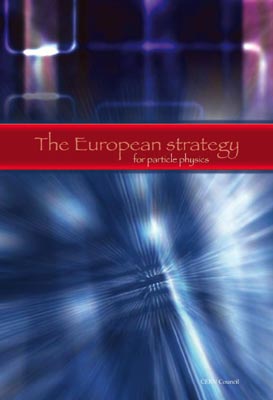On 14 July in Lisbon, CERN Council adopted a strategy for particle physics in Europe, which will enable the community to participate fully in an increasingly global adventure.

In June 2005, the president of the CERN Council, Enzo Iarocci, proposed that an ad hoc scientific advisory group be established to produce a draft European strategy for particle physics. The Strategy Group was charged to meet at a one-week workshop during the first week of May at Zeuthen, near Berlin, to work out the draft strategy. Council met in Lisbon on 14 July 2006, discussed this draft, and adopted the European strategy for particle physics.
The Strategy Group brought together a broad competence. It had one member nominated by each of the CERN member states and the directors of the major European particle physics laboratories. In addition, there were eight members from the CERN Scientific Policy Committee and the European Committee for Future Accelerators, who, together with the scientific secretary and the co-chairs, made up the Preparatory Group charged with the work needed to bring the meeting in Berlin to a successful conclusion.

For the Strategy Group meeting seven representatives were also invited from the CERN observer states, and from the Astroparticle Physics European Coordination (ApPEC) Committee, the Nuclear Physics European Collaboration Committee (NuPECC) and the Funding Agencies for the Linear Collider (FALC).
The process towards the European strategy for particle physics had four essential elements: the Strategy Group Web page, an open symposium held in Orsay from 29 January – 1 February, a Briefing Book containing the information needed to develop the strategy, and the Zeuthen meeting of the Strategy Group.
The Strategy Group Web page was the main channel for communication with the community. Minutes of the Preparatory Group meetings were posted on the website, usually within 24 hours of the meeting. More importantly, it was possible to submit contributions to the discussions through the website; 71 individuals and groups did so. The website also provided a set of links to background material.
The Open Symposium hosted by the Laboratoire de l’Accélérateur Linéaire in Orsay was a key stage in, the process. It was attended by more than 400 people, with at least 70 more following the proceedings via a webcast. The programme comprised of a series of talks aimed at identifying the key issues for a range of different topics. A particular feature of the symposium was that more than half of the time was devoted to discussions, and this time was indeed filled with a lively exchange of views.
The Briefing Book consisted of three volumes, all of which are accessible from the Strategy Group Web page. The first volume was written by the Preparatory Group, and covered scientific activities (largely based on the presentations and discussions in Orsay) and more general issues. The second volume covered the input received via the website, reports from laboratories, funding agencies and others in response to written requests, and other information that the Preparatory Group felt would assist the development of the strategy. The third volume contained the agenda for the meeting in Zeuthen, procedural details, a standardized vocabulary to describe projects and scientific objectives, and the templates for the strategy statement itself.

The full Strategy Group and official observers met at DESY in Zeuthen on 2 May. This first day was open to anyone and was also broadcast via the Web. It was devoted to talks from three invited speakers, the directors of the invited laboratories and the representatives of the observer states. On the second day, six groups studied the frontier questions in particle physics; improved understanding of the Standard Model; non-accelerator physics and the interface to cosmos; the strong interaction and the interface with nuclear physics; organization issues for the universities, national laboratories and CERN; and inter-regional collaboration. On day three, a plenary session covered the reports from the working groups and agreed preliminary conclusions on elements of the strategy. The next day, while a draft working document was assembled based on the previous day’s discussions, five groups worked in parallel on the needs of theoretical particle physics, industry, technology and knowledge transfer, education and outreach.
The draft strategy document was discussed at Zeuthen in a plenary session on the fifth day. Participants reached a consensus on the general statements, scientific activities and organizational issues, and provided detailed guidance on the complementary issues, which were incorporated following consultations with the chairs of the appropriate working group, thus fulfilling the remit.
Now that Council has adopted the European strategy for particle physics, and with it the responsibility to maintain and update it, the work is done, and the Strategy Group has been dissolved.
Many people were engaged in this process: local organizing committees, speakers and participants at the different discussions. Colleagues submitted opinions and ideas, and all involved people were very committed. We are all very grateful for these contributions.
Further reading
See www.cern.ch/council-strategygroup.
Information on the Orsay symposium is also available online at http://events.lal.in2p3.fr/conferences/Symposium06/.
Details of the Zeuthen workshop can be found at www-zeuthen.desy.de/exps/ccsg/.





